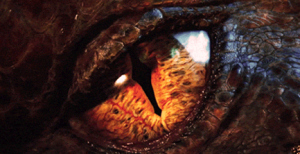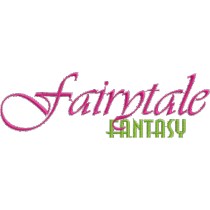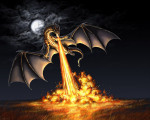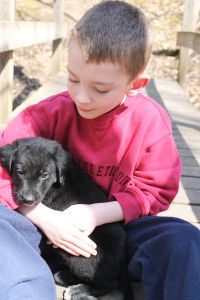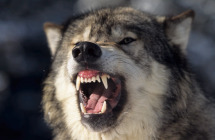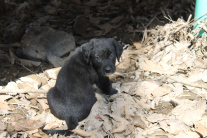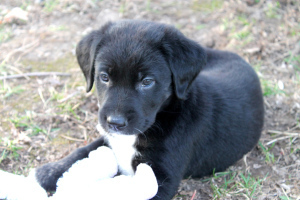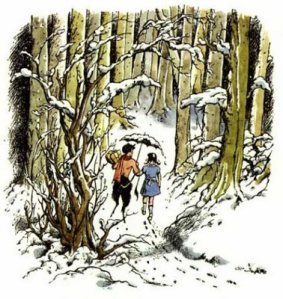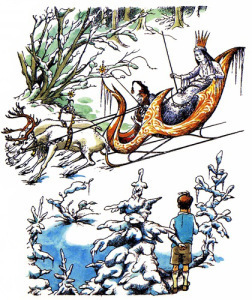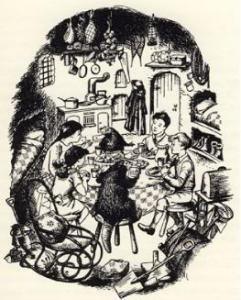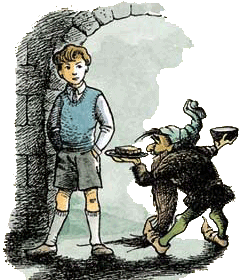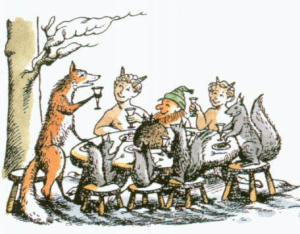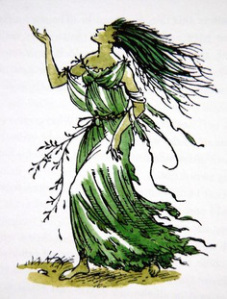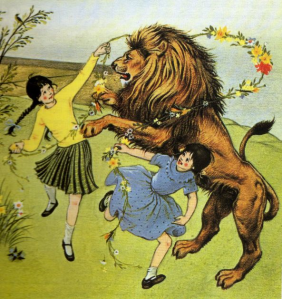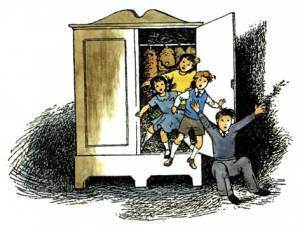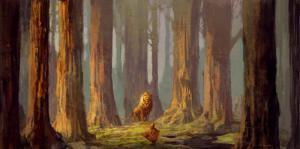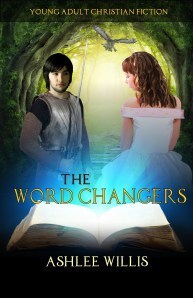Ashlee Willis's Blog, page 15
April 8, 2014
A Few Things About Dragons
“Never laugh at live dragons.”
“Fairy tales do not give the child his first idea of bogey. What fairy tales give the child is his first clear idea of the possible defeat of bogey. The baby has known the dragon intimately ever since he had an imagination. What the fairy tale provides for him is a St. George to kill the dragon.”
― G.K. Chesterton, Tremendous Trifles
“My armor is like tenfold shields, my teeth are swords, my claws spears, the shock of my tail a thunderbolt, my wings a hurricane, and my breath death!”
― J.R.R. Tolkien, The Hobbit
“No dragon can resist the fascination of riddling talk and of wasting time trying to understand it.”
― J.R.R. Tolkien, The Hobbit
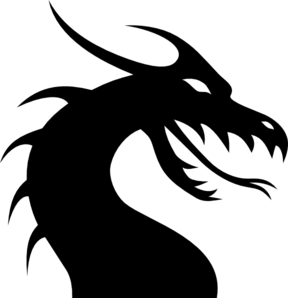 “A dragon’s heart burns fiercely, even in the face of evil.”
“A dragon’s heart burns fiercely, even in the face of evil.”
― S.G. Rogers, Jon Hansen and the Dragon Clan of Yden
“The hunger of a dragon is slow to wake, but hard to sate.”
― Ursula K. Le Guin
“Let me tell you: the only way to get rid of dragons is to have one of your own.”
― Evgeny Shvarts
“He had turned into a dragon while he was asleep. Sleeping on a dragon’s hoard with greedy, dragonish thoughts in his heart, he had become a dragon himself.”
― C.S. Lewis, The Voyage of the Dawn Treader
“And that is the story of the boy who cried ‘Dragon!’ Of course, when dragons sit around the campire at night or tuck their children into bed, they tell the story of the dragon who cried ‘Boy!’”
― Mike Resnick, Young Warriors: Stories of Strength
“There is so much more to slaying dragons than a code of honor and a damsel. It’s a complicated series of fate and destiny.”
― Yesenia Barkley
“The age of chivalry is past. Bores have succeeded to dragons.”
– Charles Dickens
“But it is one thing to read about dragons and another to meet them.”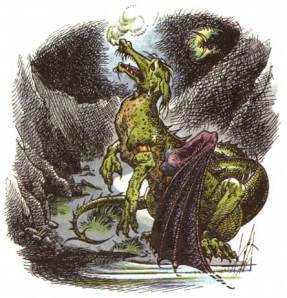
― Ursula K. Le Guin, A Wizard of Earthsea
“Come not between the dragon and his wrath.” – William Shakespeare, King Lear
“They say dragons never truly die. No matter how many times you kill them.”
― S.G. Rogers, Jon Hansen and the Dragon Clan of Yden
“He who fights too long against dragons becomes a dragon himself; and if you gaze too long into the abyss, the abyss will gaze into you.”
- Friedrich Nietzsche
“Here be dragons to be slain, here be rich rewards to gain; / If we perish in the seeking, why, how small a thing is death!”
― Dorothy L. Sayers, Catholic Tales and Christian Songs
“Noble dragons don’t have friends. The nearest they can get to the idea is an enemy who is still alive.”
― Terry Pratchett, Guards! Guards!
“Speak politely to an enraged dragon.”
― J.R.R. Tolkien
“So comes snow after fire, and even dragons have their endings.”
― J.R.R. Tolkien, The Hobbit


April 7, 2014
Noah: A Deluge of Nonsense, or Not?
I’ll admit, I have yet to see this new, highly debated movie. I’ve read review after review of it, though. All of them seem to be in one extreme or the other: love or hate.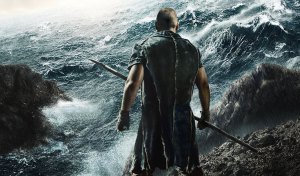
The two following reviews are by Christians who express these opposing extremes of opinion. Click on the links if you’d like to read the entire review(s).
Austin Gunderson wrote a review of Noah for the Speculative Faith website (one of my favorite websites ever, by the way), in which he claims the movie is “the greatest work of Christian speculative cinema” he’s ever seen. Strong words! He nearly had me convinced to jump up and head to the theater … until I read another review….
This one is by Matt Walsh, radically outspoken conservative/Christian blogger, and he calls Noah a “ridiculous train wreck,” which is amongst the least of his strongly-opinionated views of the movie.
So what’s a Christian to do?
Have you seen the Noah movie? What’s your opinion?


April 4, 2014
The Differences Between Fantasy and Fairy Tale
Have you ever wondered what the difference is between fairytales and fantasy? How do we know that Harry Potter is a fantasy, and Cinderella is a fairytale, and not vice versa?
To start, a fairytale is a story within the fantasy genre. Fantasy, on the other hand, is the genre itself.
Harry Potter may be a fantasy, but not a fairytale, while Cinderella is a fairytale within the larger genre of fantasy. Harry Potter also has romance in it, and mystery … will you find it in the “romance” or “mystery” section of your library? Nope. Those things are the sub-categories that fall under its fantasy classification. And “fairytale” is a sub-category as well, as far as I’m concerned.
A fairytale is always a fantasy, whereas a fantasy need not be a fairytale.
Confused yet?
While the above answer is a good one, I believe, it also leaves much to be desired in answering for the differences between fantasy and fairy tales. Even if we approach a story realizing that “fairytale” is a type of “fantasy,” that still doesn’t go far in cluing us in to what type of story we are actually reading. What are the tangible differences – the characteristics – that let us know which is which?
That’s a difficult question to answer, and not one that has any solid, black-and-white answers, unfortunately.
There do seem to be some generalized, commonly accepted characteristics of both fairytales and fantasies. Many of them overlap, which tends to make the differentiation even more fuzzy, but some of them are helpful.
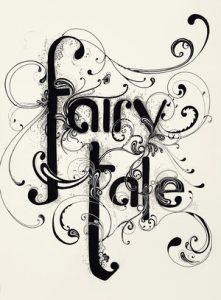 CHARACTERS:
CHARACTERS:
What about fairies, for starters? Need these fae creatures, in whatever form they take on according to the whims of their authors, be exclusively in fairytales? Can they flit about in stories of fantasy that aren’t classified among fairytales?
I believe they can.
Fairies may appear here and there throughout the more general fantasy genre, however I do believe that if a story focuses primarily on a fairy world in which the main characters are fairies themselves, you are most likely reading a fairytale.
Dragons, unicorns, wizards, princesses and knights in shining armor? These show up in both fantasies and fairytales as well.
It’s not, then, the characters or creatures themselves that are the key. At least, not wholly.
SETTING & THEME:
For me, fairytales happen locally. No, I don’t mean my next door neighbors are princesses or witches or goblins … well, not all of them, anyway! I mean that fairytales usually (note the word usually!) take place in a more confined space. The events within them do not affect the fictional world or universe on a large scale. A princess may taste a poison apple and fall into an enchanted sleep, but her sleep does not affect any but herself and the one who enchanted her. A prince may be pushed from a tower as he tries to find the long-haired girl he loves, but his falling and consequent blindness do not turn anyone’s world upside down but his own.
Fantasies, on the other hand, usually (usually!) tend to deal with sagas. Epic journeys, earth-changing drama and action that commence in the potential destroying or saving of a people, country or even a world. Frodo has to destroy the ring – yes, to save his own life and his beloved home in the Shire – but more so, to save the lives of every person and creature living in Middle Earth. The ring itself is no simple poisoned apple, used for someone to gain a petty throne. It’s a living and evil magic, created by one who would destroy the world as it is, and rule the one left in its place.
Although fairytales mostly happen “far away” or “long ago,” they seem to take place mainly within our own world. They don’t require such extensive world-building as fantasy authors employ to create their stories. There is rarely the need to explain different or foreign elements or magics that appear in fairytales. Partly because we are so familiar with them, and partly because they are fairly straightforward.
Fantasies often happen in worlds of their own – separate entirely from the “real” world. Middle Earth, Narnia, Wonderland, Oz, Earth-Sea, Westeros, Never-Never Land. These all require explanation, mapping out, building and shaping with words, pages and chapters. They are not a part of our own world, Earth, and in the fantasies where Earth is the setting, there is normally some outside magic or force at work that changes the Earth into a strange, often unrecognizable, place.
TIME PERIOD:
Fairytales originated as oral tales, told centuries ago and passed down through the generations. They were told for many reasons, among them entertainment and a way to teach a virtue or lesson. Their time period of origin can be said to be long ago; and that’s most obviously true for what are called the “original” fairytales. But there are fairytales still being written today – old ones being re-told and new ones being forged.
Fantasies are a newer type of story. While it’s debatable exactly when they originated, they seemed to not really take off until less than a century ago. The stories within fantasies themselves can be placed in settings of long ago, such as Juliet Marillier’s historical fantasies, or one of the many sub-genres of modern-day fantasy (Rick Riordan, J.K. Rowling).
LANGUAGE: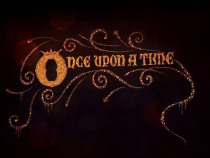
This is a subtle one, I’ll admit, and I almost didn’t mention it. But for me, there is a difference in the way fairytales are told, as opposed to fantasies. And I’m not talking only about the old or original fairytales. There are such books today told in fairytale style, among them two of my favorites: Treasure at the Heart of the Tanglewood by Meredith Ann Pierce, and Keturah and Lord Death by Martine Leavitt. You only need read the first chapter of each of these amazing books to realize that the style of language when telling a fairytale can be quite different than in a fantasy book.
These examples are all only my opinion - all my own thoughts and ramblings about what I feel to be the sometimes almost indistinguishable differences between fairytales and fantasy. You can’t base the differences between them on any one category, on any one characteristic or sign. And as we’ve seen, above, there are exceptions to every rule. So … where does that leave us? Instinct? Guesswork? Fairy dust?
Maybe a bit of each.
When you are reading fairytales and/or fantasy, how do you distinguish between them?


April 1, 2014
Dragons: Naughty or Nice?
I love dragons. I’ve always loved dragons. I can’t explain it, really. The sheer size and power of them, the wonderful, horrible way fire explodes from between their rows of gleaming teeth, the flap of their great leathery wings as they darken the sky overhead, their hoards of treasure, their dark caves, their deep, shivering mysteriousness …
But are dragons good or evil?
Well, neither, really.
Or both.
It simply depends on the author who writes the dragon to life. And I do so enjoy seeing how different authors choose to portray these wonderful, scaly beasts. I could fill my house with the number of “dragon” books I have read and would like to read …
I’m entertained by almost any dragon story. Puppy-dog-faithful dragons. Back-stabbing-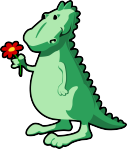 villain dragons. Friendly-good-will dragons. Ultimate-evil-burn-everything dragons. I’ll take ‘em all.
villain dragons. Friendly-good-will dragons. Ultimate-evil-burn-everything dragons. I’ll take ‘em all.
To be honest, though, I have to admit that the truly-evil type of dragon doesn’t rank high on my list. My absolute favorites will always be the ones that, as Anne Shirley says, “could be wicked … and wouldn’t.” Anne was referring to husbands, though, and that’s a much more dangerous subject than dragons.
So we’ll stick with dragons.
Do you have any favorite dragon books? Any favorite dragon in particular? Which type do you prefer – good, evil, or somewhere in between?


March 31, 2014
Dogs in Literature and a New Family Pet
After years of half-hearted contemplation, months of a-bit-more-serious contemplation, and hours of rather-serious contemplation … I finally, in my usual fashion, threw all contemplation to the wind and said, “Let’s just go for it!” Two hours later my husband came home with this little bundle:
And our lives were turned up-side-down.
Okay, okay – so it was only yesterday that we got the puppy, and there hasn’t been much of a chance for up-side-down types of things to ensue … but let’s just say I can foresee that our lives will be turned up-side-down. Especially after a night of two-hour snatches of sleep due to the whining and scratching and occasional sad howl coming from the other side of the baby gate … and the little surprises he left in the corner for me today … and the fact that no toy can tempt him if a pile of clean laundry or a Kleenex box is nearby …
Being who I am, when it came time to name the puppy, I went straight to my favorite books – characters, pets, places, it didn’t matter. I wanted a pet name that would remind me of a world that means a lot to me. So without further ado, here are some of the names we considered, and their literary origins.
Firstly there’s Argos. That’s the name my husband wanted for our little squirmer (notice I say wanted … my son used his right of veto for this one). Supposedly one of the first dogs to be named in Western literature, Argos belonged to Odysseus. His name is synonymous with faithfulness and fidelity. That’s because he waited 20 years for his master to return, and when Odysseus finally did turn up, Argos was the one who recognized him first.
I’ll admit it – I love the direwolves from the A Song of Ice and Fire series by George R.R. Martin. They’re not dogs (exactly), but I say they count. Who wouldn’t want to have a wolf for a pet? No? Is that just me, then? Ghost, Grey Wind, Summer … I seriously considered some of these names for our new pup. But while we love him dearly already, I’m just not sure he’d do the name of direwolf justice :)
Next: Sirius Black. Overused? Probably. Do I love it anyway? Yep. And our puppy is black (well, mostly)! Too bad my son vetoed it, too (did I mention he had unlimited vetoes?!).
Emily Bronte (the author of Wuthering Heights) had a dog named Keeper. I read about that in her biography years ago, and have kept the name in mind since. I love the Bronte sisters, plus the name was catchy – so why not? Then when I married my husband, who is a soccer player, and I learned that a goalie is also called the “keeper” – I thought it was absolutely meant to be! When I mentioned Keeper as a possible name for our new puppy, my husband himself shot it down. So much for that.
Barring the name of Emily Bronte’s real-life dog, I ventured to suggest the name of her sister Charlotte’s fictional dog, who happens to be in one of my favorite books, Jane Eyre. Pilot is the dog’s name – Mr. Rochester’s large, faithful companion. In the novel, Jane describes Pilot as being black and white (perfect!). She first sees him against the backdrop of the wild and windswept moor where she also meets Mr. Rochester for the first time. How’s that for a name that conjures up whimsical literary images? I loved it.
Guess what? So did my son!
And since it’s probably fairly obvious to you that his vote was really the only one that counted all along …. may I introduce to you our new family member: Pilot.
Pilot joins a family of two hamsters named Happy and Sleepy (named for Snow White’s dwarves, of course!), a rather prissy cat named Princess Peach (you guessed it … Nintendo), and two hermit crabs named Hermie and Crabby (those guys were named on a day when creativity was on a bit of a hiatus …).
Did you have fun finding creative names for your pets? I’d love to know what they are!


March 26, 2014
Fairy Tales Are For Boys, Too
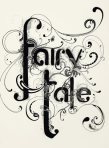 I’ve often thought that fairy tales are unfortunately named. Not many boys want to get near any story that has the name “fairy” or “princess” in it. That sounds like a stereotype – but go ahead, ask the next boy you see how many fairy stories he’s read lately. Or ever.
I’ve often thought that fairy tales are unfortunately named. Not many boys want to get near any story that has the name “fairy” or “princess” in it. That sounds like a stereotype – but go ahead, ask the next boy you see how many fairy stories he’s read lately. Or ever.
But I say that if a girl wants to read a story about romance and princesses in towers that just happens to include sword fights and danger … then why can’t a boy want to read a story about sword fights and danger that just happens to include a bit of romance and maybe a princess or two?
I grew up as a bit of a tomboy. I liked having mud sliding contests in the field behind our barn more than I enjoyed playing with dolls. You would have found me by the creek or up a tree more often than you’d have found me in the house (ok, that’s still true…). I liked the scary stories, the adventuresome stories, the stories with pirates and swordfights and battles. I didn’t seek out fairy tales for the romance, and I didn’t much admire the damsels in distress. Yet I read them, and I loved them.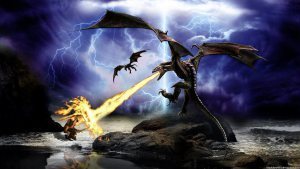
My own son, who is seven, loves them too. He’s not embarrassed to read fairy tales because he, like a true innocent, looks straight at the heart of the story – not at the title or the genre or the implications thereof. And when he looks at the heart of fairy tales, he sees the adventure in them. He is drawn by the mystery and the danger and the ultimate triumph of the hero. He flies around the house, brandishing his wooden sword while his homemade cape billows behind him … he’s a little hero himself. And it’s all because of fantasies and fairy tales and the dreams they have planted in his brave, sweet heart.
Boy, girl, man, woman … do you read fairy tales? What draws you to them? Which are your favorites?


March 22, 2014
Pictures of the World Through the Wardrobe
I am a huge believer in the capability of art to take us into other worlds. In fact, it’s much the same way I feel about books. And when the two are brought together – a book and the artwork that represents it – the cosmos can utterly explode! Okay, well, they do for me, anyway.
Pauline Baynes was an illustrator of many, many classic children’s books, among them (of course!), The Lion, the Witch, and the Wardrobe. Recently I came across a special edition of this book at a used book sale, in spanking new condition, with all of Baynes’ original artwork. Eeeekk!! And at 50 cents??!! Yeah, I was very excited.
Flipping through the pages, it came to me, not for the first time, how deeply a picture can make you feel about something, or some place. There are pictures of Narnia and many other stories still floating in my head from the first time I read them. And when those pictures resurface, no matter where I am or what I’m doing, I am instantly pulled back into the warmth and familiarity of the world they represent. It’s a truly wonderful feeling to know you have the power, within your own imagination, to tap into endless worlds, wonders, magic, and adventures at any given time.
So in honor of this wonderful artist (of whose illustrations Tolkien’s friends said had reduced his text to a mere “commentary on the drawings”), and in honor of the bewitching quality of art itself, I’m posting several of the illustrations from the original version of The Lion, the Witch and the Wardrobe.
Are they what you imagine when you see Narnia? Which illustrators and/or works of art transport you into far worlds?


March 15, 2014
Edits, ARCs and a Tree House
This week I’ve been working on edits for THE WORD CHANGERS. The first round was finished a few weeks ago, and the second round (thankfully!) was much less intense. There will likely be a third round quite soon, which will probably be the last! *Happy dance!*
My publisher informs me he hopes to have ARCs for THE WORD CHANGERS printed by the end of this month. As in … March. THIS MONTH!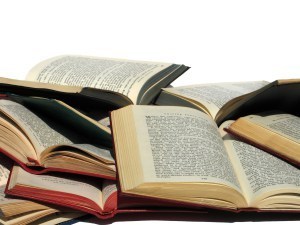
What, you may very well ask, is an ARC?? Well, truth be told, I was wondering that myself not so many moons ago …
It is, my friend, an “Advanced Reader Copy.” What that means is that, while THE WORD CHANGERS may not have completed its final edit quite yet, the unfinished paperback version of it will be available to certain readers chosen by my publisher, so that reviews will be available and circulating before the actual release date of the book.
Yay for ARCs! I may decide to do a giveaway for one of my copies in exchange for a blog/Goodreads/Amazon review … so keep watching for that!
So, yes, THE WORD CHANGERS is not yet out and the edits have been much less than horrible. But have I been idling away my time? Nope. I am nearing the end of a brand new book! Eeek! For those of you write, you know how exciting it is to get near that finish line. Today I finished my second-to-last chapter … just one to go! I’m so close, I can just smell it!
It’s not a sequel to THE WORD CHANGERS, as many people have asked me, although it is a YA fantasy (of course!). And while I really prefer writing standalone books, this one has turned into a duology. It was simply too much to put into one book, and I think it works well as a two-book set. So once all the work is finished on the first one (edits and revisions and other fun things) I will be plugging away at the second one. I can’t say much about it now because even my agent hasn’t seen it yet – but I hope to tell you more in the coming months.
Oh, and one more exciting thing … my 6-year-old wants me to inform everyone his treehouse is now official finished and ready to play in! Right in time for spring!
Yay for edits and ARCs and tree houses!


March 5, 2014
What In the World is “Christian” Fantasy?
Truthfully? I don’t know.
All right, I know how I myself define Christian fantasy, let’s put it that way. But a clear-cut definition that pleases everyone? Not sure that will ever happen.
So, here’s what I think: I think a Christian fantasy story can be one of a few things. For now I’m going to assume that you are as familiar with “fantasy” books as I am, and we will skip the “fantasy” definition and move right along to what makes a book a “Christian” fantasy. Shall we?
1. A fantasy story that has parallels to Christianity.
There are many stories we could look at in this way – even stories that the author herself may not have intended to write from a Christian worldview at all. Perhaps the author wasn’t even a Christian! I think of books like Harry Potter (which, let’s face it, has a lot of Christian parallels if you look at it at the right angle), or even the Lord of the Rings trilogy (although Tolkien himself specifically said this book was not based on Christianity). Did the authors intend these books to symbolize Christ or Christianity? No. Can we as readers see and enjoy the parallels in these beloved stories that compare to our own Christian walk? Yes!
2. A fantasy story that has intentional Christian symbolism in its characters or theme.
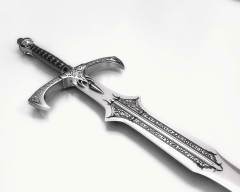
Think of Lewis’ Narnia, think of Anne Elisabeth Stengl’s Heartless. There are characters who represent me and you, human and faulted. And there is the One over them all who makes everything right in the end, who reveals to us the characteristics that we as Christians know our God Himself possesses. For some (mostly non-Christian readers), this type of symbolism is too much – too obvious or “preachy.” Me, I like it. Hey – I write it! It gives me a premise I know already, the foundation of a spiritual world I cannot see but which is around me every day, and then inserts characters and situations that are adventuresome and intriguing. Yeah, there’s symbolism – no one’s arguing that. But it’s meant to be obvious, it’s meant to take something you’ve thought of a thousand times and make you see it in a new light.
3. A fantasy story where God is simply represented as Himself, with no parallels or symbolism.
Ok, I’ll admit, I have yet to read a story like his, although I have seriously considered writing one myself. I have heard of one or two books like this, which are fantasy stories that include God as we know Him. Have you read anything similar? Let me know – I’d love to read it, too!
4. A fantasy story where, even if a God-like character does not exist, true biblical values are made obvious in the book’s theme because of the author’s worldview.
This one is much more subtle. What we as Christians call “biblical” values and truths are sometimes claimed by the world as well. Truth, honor, integrity, patience, love … these were created by God, my friend, and without Him they have little value. But some books that include these virtues would require quite a stretch of imagination to label as “Christian.” These virtues, therefore, aren’t the sole criteria for a book to be “Christian” fantasy. So, the final judgment would have to be based on the individual book, and on the author’s worldview and intention in writing it.
I think it’s important to note that there are a multitude of books out there, fantasy and otherwise, that have religious symbolism, even books that have a God-figure in them. This most definitely does not make them Christian. If a book has a world with parallels to Christianity, it needs to be based on what the Bible defines as Christianity. If a book has a character that represents God, he needs to show God’s real attributes as revealed in the Bible itself. The Golden Compass is a good example of the opposite of this – religious symbolism gone wrong.
Those are my definitions, faulty though they may be. It’s a tricky thing, trying to pin down a definition for something so wide and deep. What do you think? Do you have your own definition of what a Christian fantasy should be? I’d love to hear it!


March 2, 2014
My Cover Art and Future Giveaways
For any of you who didn’t get a chance to check out the official Cover Reveal over at Anne Elisabeth Stengl’s blog, here’s the cover for my book, THE WORD CHANGERS, which releases in June.
The giveaway at Anne Elisabeth’s is over, but don’t worry! I will be doing another giveaway when the book releases. I also plan on doing drawings for prizes when I get a certain amount of reviews for the book on Goodreads or Amazon. So if you want to be part of it, swing by Goodreads and add it to your to-be-read list (and send a friend request my way, too, if you’d like!), or you can follow me on Facebook for updates.
As I am learning, there are many things that don’t go exactly as you wish for your book, and though I originally had other ideas for my cover, I am pleased all the same with how it turned out! Hope you are, too!



